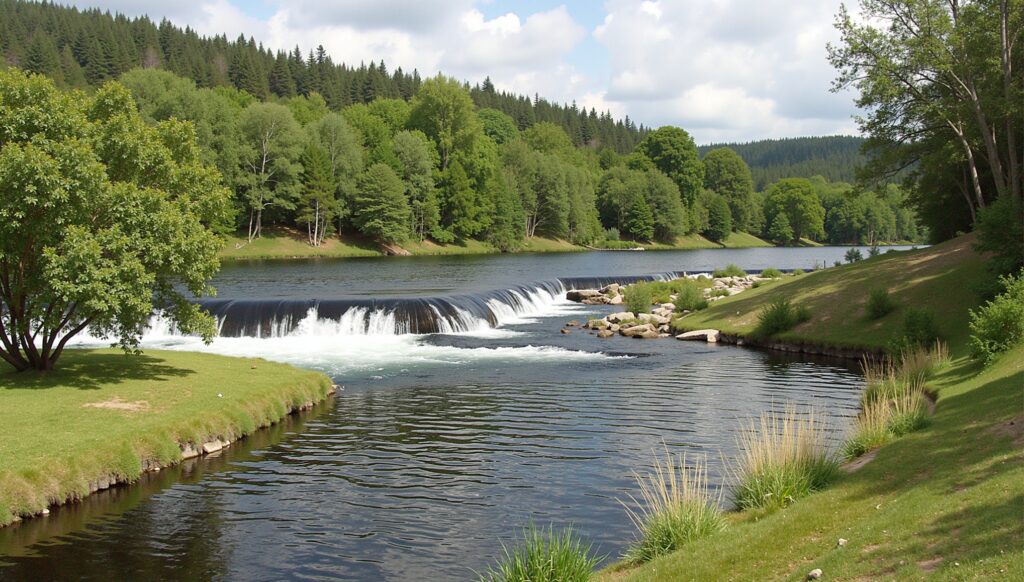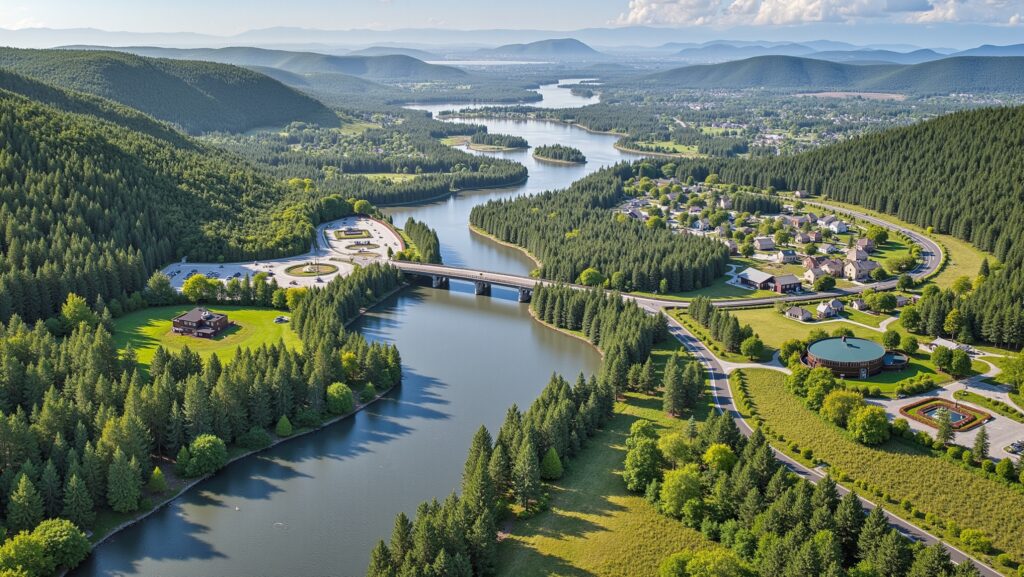Watershed land plays a critical role in maintaining the ecological balance of our environment and supporting the diverse ecosystems within it.
As we delve deeper into the importance of these areas, we will define what watershed land is, discuss its significant ecological functions, and examine the various impacts of human activity that threaten these regions.
Furthermore, we will explore effective conservation strategies, the role of education in fostering community engagement around watershed preservation, and highlight successful case studies that showcase positive management initiatives.
By understanding the importance of watershed land, we can better appreciate our natural resources and the necessity of protecting them for future generations.

Key Takeaways
- Watershed land is crucial for maintaining the health of our natural ecosystems.
- Protecting watershed areas helps mitigate the impact of human activities on water resources.
- Conservation strategies are essential for preserving the ecological functions of watershed land.
- Education plays a key role in engaging communities in watershed preservation efforts.
- Successful case studies highlight effective management initiatives that can inspire local actions.
Understanding Watershed Land: Definition and Significance
Watershed land refers to the area of land that collects and drains rainwater, which flows into a common water body such as a river, lake, or ocean.
Understanding the definition and significance of watershed land is crucial for effective environmental management and sustainability.
These regions play a vital role in controlling water quality, reducing soil erosion, and supporting diverse ecosystems.
They act as natural filters, trapping sediments and pollutants before they reach larger water bodies, thus maintaining the health of aquatic habitats.
Moreover, effective management of watershed land is necessary for agricultural productivity, flood prevention, and ensuring a reliable water supply for local communities.
With the increasing impacts of climate change, maintaining and restoring the integrity of watershed land has become essential for conserving water resources, supporting biodiversity, and mitigating environmental hazards.
Ecological Functions of Watershed Land
Watershed land plays a crucial role in maintaining ecological balance and supporting various environmental functions.
These areas are defined by the land that drains into a particular water body, such as a river, lake, or ocean, creating a natural system for managing water flow and quality.
One of the primary ecological functions of watershed land is its ability to filter pollutants, sediment, and nutrients before they enter waterways, enhancing water quality for ecosystems and human use alike.
Moreover, watershed lands serve as vital habitats for numerous wildlife species, providing food and shelter while promoting biodiversity.
They also play a significant role in regulating the hydrological cycle by absorbing rainfall, reducing runoff, and replenishing groundwater supplies.
Additionally, watershed land helps mitigate the impacts of flooding and erosion by stabilizing soils and controlling water flow.
Understanding these ecological functions is essential for sustainable land management and conservation efforts aimed at preserving the health of our watersheds and the vital resources they sustain.
‘We won’t have a society if we destroy the environment.’ – Margaret Mead

Impact of Human Activity on Watershed Areas
Watershed land plays a crucial role in maintaining the ecological balance of our environment, yet it faces significant threats from human activities.
Urbanization, agriculture, and deforestation are primary factors that lead to the degradation of these vital areas.
Urban expansion often results in the sealing of surfaces, which prevents water from percolating into the ground, thereby affecting groundwater recharge.
Additionally, agricultural practices, such as excessive use of fertilizers and pesticides, contribute to the pollution of waterways, harming ecosystems and biodiversity.
Deforestation disrupts the natural habitat, increases soil erosion, and alters the hydrological cycle, causing more severe flooding and drought in the region.
Understanding the impacts of human activities on watershed land is crucial for implementing effective management strategies that protect these vital resources for future generations.
Conservation Strategies for Watershed Preservation
Watershed land plays a crucial role in maintaining the ecological balance and ensuring the sustainability of natural resources.
Effective conservation strategies for watershed preservation are vital in safeguarding these landscapes.
First and foremost, reforestation efforts can significantly enhance watershed health by restoring native vegetation, which improves soil structure, reduces erosion, and increases water retention.
Additionally, implementing sustainable agricultural practices helps minimize pollution runoff and protects water quality.
Creating buffer zones around water bodies, where native plants thrive, can filter contaminants and provide habitats for wildlife.
Engaging local communities through education and involvement in conservation projects fosters a collective responsibility towards watershed land management.
Lastly, monitoring and enforcing regulations against overexploitation ensures that these critical areas remain protected for future generations.
By combining these strategies, we can effectively preserve our vital watersheds.

The Role of Watershed Education in Community Engagement
Watershed education plays a critical role in fostering community engagement, especially in regions heavily dependent on natural resources.
By teaching residents about the importance of watershed land—areas that drain into a common waterway—communities can better understand how their actions impact local ecosystems and water quality.
Educational programs often emphasize the connection between watershed health and community well-being, encouraging proactive involvement in conservation efforts.
This newfound awareness can lead to collaborative projects such as tree planting, litter clean-ups, and sustainable land management practices.
When communities actively participate in preserving their watershed land, they not only protect vital ecosystems but also promote a sense of shared responsibility and stewardship that benefits future generations.
Case Studies: Successful Watershed Management Initiatives
Watershed land management plays a crucial role in sustaining ecosystem health, ensuring water quality, and enhancing community resilience against climate change.
Case studies across various regions showcase successful initiatives that not only protect watershed land but also promote sustainable economic practices.
For instance, in the Pacific Northwest, forest restoration projects have reestablished native plant species, thereby improving water permeability and reducing soil erosion.
Another notable example is in the Appalachian region, where collaboration between local governments and conservation organizations led to the implementation of sustainable agricultural practices that improved the condition of watershed land while supporting farmers economically.
These case studies illustrate the tangible benefits of effective watershed management and the vital importance of integrating environmental stewardship into land-use planning.
Frequently Asked Questions
What is watershed land and why is it important?
Watershed land refers to the area of land that drains rainwater or snow into a particular body of water, such as a river, lake, or ocean.
It is crucial for managing water resources, supporting biodiversity, and maintaining ecosystem health.
How do human activities impact watershed areas?
Human activities such as deforestation, urban development, and agriculture can lead to pollution, erosion, and the disruption of natural water flow, ultimately degrading watershed health and reducing its ability to provide essential ecological services.
What conservation strategies can be implemented to preserve watershed land?
Conservation strategies include reforestation, establishing protected areas, sustainable farming practices, and promoting responsible land use to minimize human impact and enhance the resilience of watershed ecosystems.
How does watershed education contribute to community engagement?
Watershed education raises awareness about the importance of watersheds and engages communities in conservation efforts.
By informing residents about their local watersheds, they are more likely to participate in preservation activities and support sustainable practices.
Can you provide examples of successful watershed management initiatives?
Yes, successful initiatives include the Chesapeake Bay Program in the United States, which focuses on reducing pollution through community engagement and partnership, and the Afon Teifi project in Wales, which integrates local stakeholder participation in conservation efforts to restore and protect watershed health.





